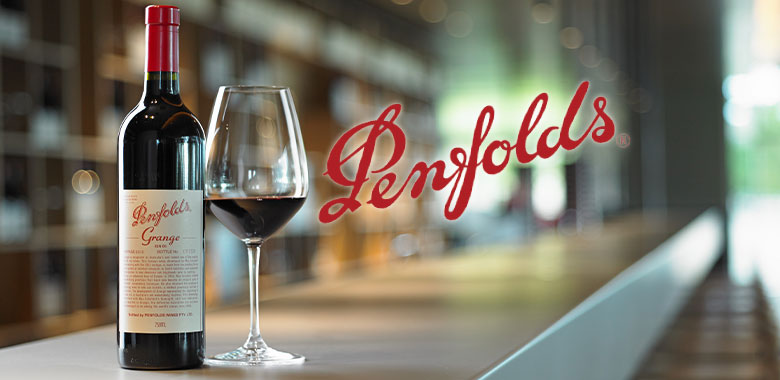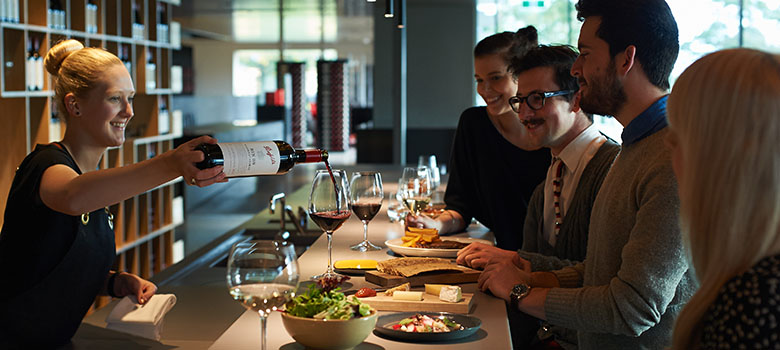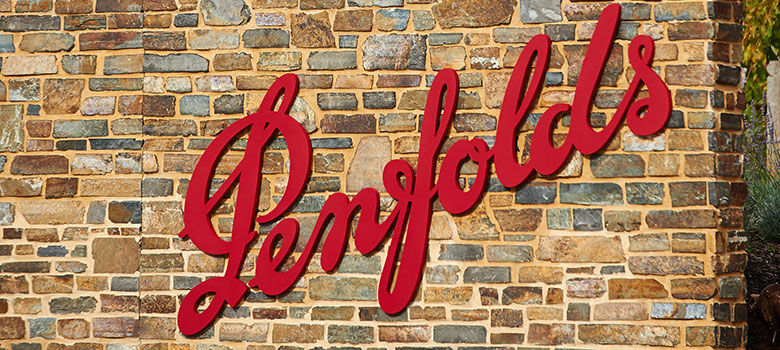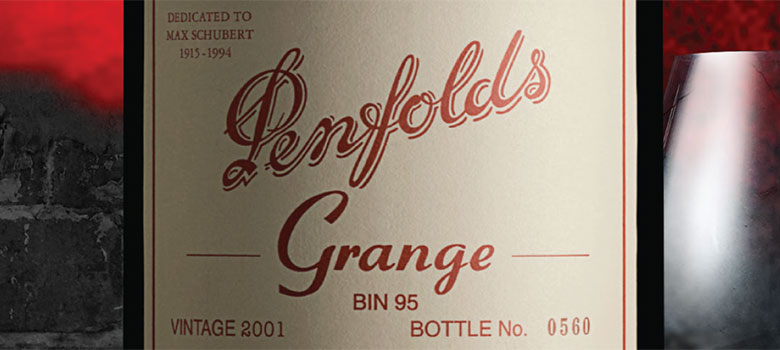
Wine
A Guide to Penfolds Grange Wine
A true giant of Australian wine
Of all the names of Australian winemaking, one stands alone - Penfolds. Founded in Adelaide in 1844, Penfolds is one of Australia’s oldest wineries – and perhaps its biggest international success story, thanks in large part to the efforts of co-founder Mary Penfold, and later to its development of what would become its signature wine, Penfolds Grange.
The story of Australian winemaking owes a great deal to emigrants from distant shores. Not only did new arrivals from England, France and elsewhere bring vine cuttings with them from the Old World to establish new lives on Australia’s soils, they brought their hopes, aspirations and diverse talents to bear in building legacies that could stand the test of time.
Among them were Christopher and Mary Penfold. Hailing from West Sussex, England, the young couple – 33 and 24 respectively – landed in Australia in 1844 and, with the help of family, soon acquired 500 acres of land in the foothills of the Mount Lofty Ranges just outside Adelaide.
This land, the Magill Estate, soon became their home with the building of their cottage, ‘The Grange’. French vine cuttings, brought from England, were planted – as were the seeds of one of the great stories in Australian wine history.
A long-time believer in the medicinal properties of wine, Christopher and Mary hoped to devise a tonic for the treatment of anaemic patients with the fruits of his plantings in the small practice he had established on the outskirts of Adelaide. Little did they know what lay in wait for their modest estate.

THE ARCHITECT OF PENFOLDS RISE TO GREATNESS
Initially, fortified wines were produced for patients in Christopher’s care, but soon demand began to outstrip early supply. So called ‘clarets’ – dry red wines – and Riesling proved easy to produce and were growing in popularity.
As a result, the winery was expanded and officially established later that same year. With Christopher’s medical practice requiring more and more of his attention, Mary took on greater responsibilities at the winery, cultivating vines and experimenting with the blending of grapes. In doing so, Mary became a quiet pioneer, whose taste, instinct and discernment would fundamentally influence Australian winemaking for generations to come.
Following Christopher’s death in 1870, Mary took charge of all winery operations at Penfolds, which had grown to over 60 acres producing a range of varietals. Mary’s efforts included discovering new ways to combat the devastating effects of phylloxera, exploring new techniques in winemaking, and mastering the art of blending.
By the time of Mary’s retirement, Penfolds owned a sizeable share of all of South Australia’s wine stores, had a growing market on Australia’s east coast, and was already on the radar of European wine lovers thanks to its presence at a colonial exhibition in London.
THE BIRTH OF PENFOLDS GRANGE – PENFOLDS GRANGE HERMITAGE
Penfolds continued to grow in the early years of the 20th century under the guidance of Mary and Christopher’s Georgina and her partner Thomas Hyland. More vineyards were purchased in McLaren Vale and New South, and the winemaking continued to evolve in response to changes in consumer tastes, increasing its emphasis on table wines during the tumultuous decade of the 1940s to 1950s.
One such evolution, spearheaded by then-Chief Winemaker Max Schubert, was the 1951 production of what would become Australia’s most famous, most collectable wine – the Grange Hermitage, later simply named Grange. The result of Schubert having toured Bordeaux and returning with the intent of creating an Australian wine to rival that of the famed French region, the first bottles of Grange from the 51 were largely given away.
Commercial production of Grange began with the 1952 vintage, and the rest, as they say, is history. But the first Grange wines were far from a runaway success, with many finding them too powerful for easy enjoyment. Poor reception from critics and uncertain commercial prospects for the wine led Penfolds management to instruct Schubert to cease production of Grange. Unbeknownst to them, however, he continued crafting it in secret, hiding his work until 1959.

By then, those initial vintages had softened and matured, revealing Schubert’s craft. A considered blend of Shiraz and Cabernet Sauvignon, the inherent qualities of the wine had come into their own. Management gave the go-ahead for Schubert to continue production of Grange – turning a blind eye to the fact that he’d never stopped – and soon the awards and international recognition started flowing in.
The status of Penfolds was already well established, but Grange cemented its place as one of the defining Australian wineries past, present and future. While Penfolds was made public in 1962, The Penfolds family continued to have a controlling stake in the winery until 1976, when it was acquired by New South Wales’ Tooth & Co.
Today, Penfolds forms part of Treasury Wine Estate, and continues to produce not only Grange – with fruits harvested from its Barossa Valley and Coonawarra vineyards as well as its spiritual home of Magill Estate in Adelaide – but a host of premium and ultra-premium wines much admired for their character and quality, regardless of price point.
WHAT MAKES PENFOLDS GRANGE SO GREAT?
Voluptuous, beguiling, inviting, opulent, layered, sublime. These are some of the words often used to describe Penfolds Grange. Unlike the most expensive wines of Europe, Grange are not single vineyard productions, but rather a carefully blended composition of high quality grapes harvested from a wide region. What gives Penfolds Grange its value is the craft and expertise that goes into each vintage.
As observed by wine writer Lisa Perrotti-Brown, one significant factor in its enduring appeal is its ageability. Allegedly, on his trip to Bordeaux prior to the creation of Hermitage Grange, Schubert witnessed a particular approach to fermentation where fermentation was finished in the barrel, rather than in vats on skins.
Whatever the truth may be, it seemed to pay off handsomely with the warm-climate Shiraz that is the primary component of Grange.
The success of Penfolds Grange at award shows here and overseas over the last 70 years also stands as testament to its quality, such as the 1955 Penfolds Grange, winner of over 50 Gold medals, and the 1971 Penfolds Grange, First Prize in Shiraz at the Paris Wine Olympics
WHAT MAKES PENFOLDS GRANGE SO EXPENSIVE?
With a typical bottle of Grange starting at $900, you may wonder why Grange is so expensive. As mentioned, a large part of the value of Grange arises from the estimation of the skill that is in each bottle.
Another consideration is age – younger bottles increase in value with each year as the wine within develops, with older bottles, or those from vintages recognised as truly outstanding fetching prices of $50,000 and upwards.
The 1951 Grange, for instance, sold for $78,000 in 2018. The price in this instance was due to a couple of factors, but largely because it was never made available commercially and exists in such few numbers (estimated to be around 20 bottles, from 1,800 originally bottled).

In 2021, a 1951 Penfolds Grange sold at auction for $122,001, despite having been re-corked and showing label damage. The auction result made it the most expensive bottle of Grange Hermitage to date – even considering its condition, not to mention the wine being considered past its ideal drinking window.
Similarly, the so-called ‘Hidden Grange’ – bottled during the three years where Schubert continued producing in secret after management ordered a stop to the making of Grange – are highly prized indeed due to their rarity.
There’s also the status of it being arguably Australia’s flagship wine – the kind of thing that, for some, is worth having in the cellar is worth almost any price.
IS PENFOLDS GRANGE A GOOD INVESTMENT?
Considering that the 1971 Penfolds Grange first sold for $10 on release, and today sells at auction for upwards of $1,100, there is certainly grounds to argue that a bottle of Grange can represent a good investment. As with all things collectable, the older and rarer the stock, the more significant its value.
If buying a Grange, it’s always recommended you do your research, to learn about its relative scarcity, its provenance, the condition of the bottle, and how it’s been cellared. That said, collectors and connoisseurs often spend big to secure a bottle not for drinking, but for display.
Full verticals of Penfolds Grange, featuring a bottle from every vintage since 1951, occasionally go on sale or to auction. In 2016, one such vertical from 1951-2012 sold for over $300,000 – and will only accrue in value, particularly if the buyer continues to add to the set with each successive release.
WHAT DO THE BIN NUMBERS ON PENFOLDS LABELS MEAN?
A Bin Number refers to the storage location of a wine in the Penfolds cellars during its ageing process. When it comes to Grange, Bin 1 was the original location of the 1951 vintage. 1952 was stored in Bin 4. By 1965 however, the Bin designation for Penfolds Grange was standardised as Bin 95.

WHAT IS THE BEST PENFOLDS GRANGE VINTAGE?
There’s simply no perfect answer to this question.
The best Grange wines will still be enjoyable 50 years later, but a general rule of them is that any Grange would be in its peak condition anywhere between 15 to 25 years after its vintage.
According to Langton’s, Australia’s foremost auction house for Penfolds Grange, the top 5-drinking Grange of the last half-century are:
- Grange Hermitage 1976
- Grange Hermitage 1986
- Grange 1990
- Grange 1991
- Grange 1999
Generally speaking though Grange is regarded as one of “the most consistent and reliable of the world’s great wines” – even in the face of difficult vintages – meaning there are ample opportunities to enjoy Grange at what many would consider its ‘best’.
WHAT ARE SOME OTHER GREAT PENFOLDS WINES BESIDE GRANGE?
Penfolds success isn’t built only upon their legendary Grange, nor their reds for that matter. Other great wines include their Bin 707 Cabernet Sauvignon; their RWT Bin 798 Barossa Valley Shiraz, Magill Estate Shiraz, St Henri Shiraz, or Bin 170 Shiraz; and their signature white release, the Yattarna Chardonnay, conceived as the co-equal in terms of prestige and quality to Grange.
There are also fantastic wines available at very approachable prices like the Penfolds Commander in Chief; the Noble Explore Shiraz; and the popular Koonunga Hill Shiraz and Cabernet Sauvignon.
While none of these wines will likely ever see the kind of veneration – and valuation – of Penfolds Grange, these are all wines that bring the esteem of the Penfolds name to anyone’s table, whatever the budget.
TO PENFOLDS, TO GRANGE, AND TO GREAT AUSTRALIAN WINE
Clearly, Penfolds has played and continues to play a crucial – arguably a central – role in the development and growth of the Australian wine industry.
From the pioneering days of Christopher and Mary Penfold to the visionary talents of Max Schubert and the heady atmosphere of auction rooms around the world, one thing has held true throughout – Australian wine is amongst the best in the world.
Do you have a Penfolds in your cellar or wine rack? If so, share it with others via our Facebook or Instagram – and let others get a taste of your great taste in this country’s exceptional wines!